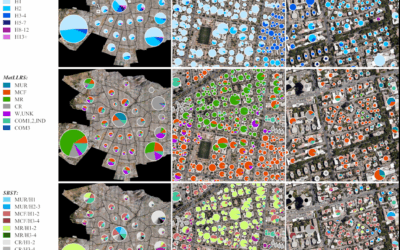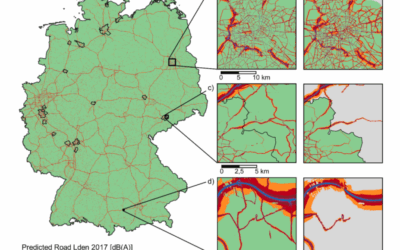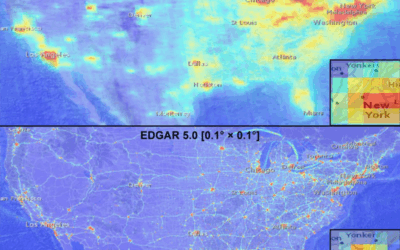Researchers from the Earth Observation Center (EOC) of the German Aerospace Center (DLR) in Oberpfaffenhofen, the University of Applied Sciences (HM) in Munich, the Max Planck Institute of Animal Behaviour in Konstanz and our Earth Observation Research Cluster of the University of Würzburg teamed up for a study on flight behavior of storks combined with remote sensing data. The paper titled “Routing for white storks [Routenplanung für Weißstörche]” was just published in the VDVmagazin 5/2024 by Lea Schollerer, Ines Standfuß, Matthias Weigand, Hannes Taubenböck, Martina Scacco, Andrea Flack and Andreas Schmitt. This study was carried out as part of a Master’s thesis at the EOC together with the HM, and has since been continued in the context of a doctoral thesis at the University of Würzburg.
Here is the abstract of the paper [translated to English]: As a migratory bird, the white stork is dependent on soaring flight and thus on the presence of thermal uplift. The animals gain altitude by circling upwards in vertical air streams, which are caused by thermal uplift, among other sources, and can then cover several kilometers in gliding flight. The use of gliding is essential for the birds, as flapping flight would be too energetically costly for the birds to be successful in their migrations. This article investigates whether parameters derived from Landsat 8 Land Surface Temperature data can be used to detect small-scale temperature variations and determine potential sources of thermal uplift in the landscape.
DOI to the article: https://doi.org/10.14627/vdvmagazin-2024-5-1
Link to the VDV Magazine: https://www.vdv-online.de/vdvmagazin/jahrgaenge/detailansicht/vdvmagazin-5-2024.html








